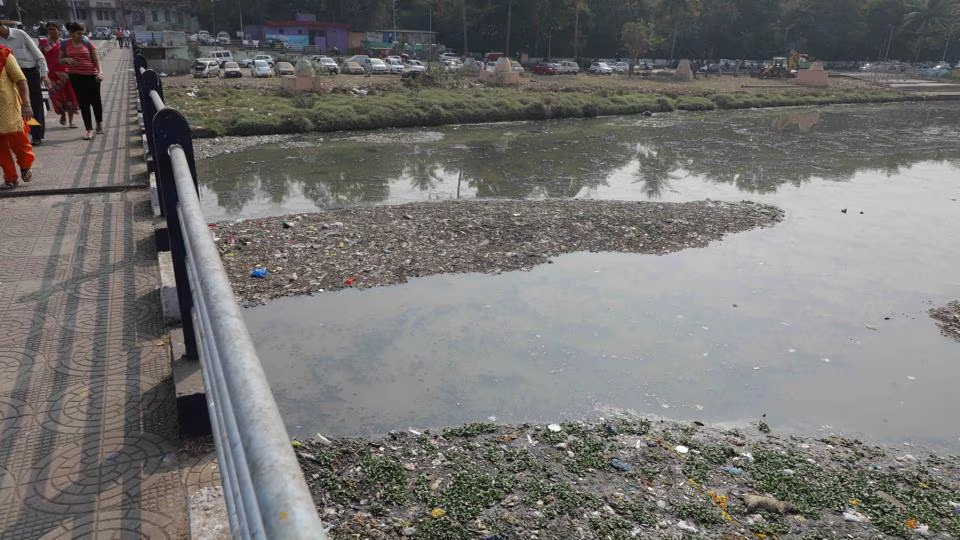Pune Mula River Pollution Reaches Alarming Levels, NGT Demands Action
Pune’s Mula River has become a symbol of environmental degradation, with pollution levels surpassing safety standards in key locations such as Pimple Nilakh and Baner. The Maharashtra Pollution Control Board (MPCB), in its recent submission to the National Green Tribunal (NGT), revealed that organic and inorganic contaminants in the river exceed permissible limits, severely impacting aquatic life. The crisis came to light after a mass fish die-off was reported on 22nd September last year, prompting an investigation into water quality. MPCB’s analysis found that sewage treatment plants (STPs) in these areas were failing to meet discharge standards, with Biochemical Oxygen Demand (BOD) and Chemical Oxygen Demand (COD) levels far exceeding prescribed limits. The 20 MLD STP at Pimple Nilakh recorded alarming readings of 54 mg/l BOD and 140 mg/l COD in December 2023—more than five times the acceptable threshold—before showing marginal improvements in later months. Similarly, Baner’s 30 MLD STP failed multiple tests, with pollution levels worsening instead of improving over time.
The civic failure is stark, with the MPCB reporting 1,178 days of violations by the Pimpri Chinchwad Municipal Corporation (PCMC) and an even higher 1,531 days by the Pune Municipal Corporation (PMC). This prompted NGT’s Western Bench in Pune to intervene on 6th February, instructing PMC to disclose measures being taken to mitigate pollution. The tribunal, comprising Justice Dinesh Kumar Singh and expert member Vijay Kulkarni, directed PMC to file a rejoinder affidavit detailing its response to the crisis. The issue is being heard as a suo motu case, originally initiated after media reports on the mass fish deaths. The next hearing is scheduled for 9th April, by which time PMC must provide its plan for containing BOD and COD levels in the river. The MPCB, meanwhile, has issued multiple notices to both municipal bodies, demanding compliance with discharge norms and seeking a comprehensive action plan to curb pollution.
Sustainability and Environmental Impact
The unchecked discharge of untreated sewage into the Mula River raises serious sustainability concerns, particularly regarding water security and biodiversity. The rising pollution levels have disrupted the river’s fragile ecosystem, threatening not just aquatic species but also residents dependent on groundwater. Experts warn that high BOD and COD levels indicate severe organic pollution, which can trigger hypoxia—depleting oxygen levels in the water and leading to large-scale fish mortality. Additionally, contamination from heavy metals and industrial effluents could have long-term consequences for soil and agricultural sustainability in surrounding areas. The lack of stringent enforcement against erring STPs underscores the need for greater regulatory oversight and investment in sustainable urban planning. With climate change intensifying water scarcity, protecting Pune’s rivers should be a top priority for policymakers.
Civic and Urban Governance Failures
The crisis highlights persistent gaps in urban governance, where rapid urbanisation has outpaced the capacity of civic bodies to manage waste effectively. Both PMC and PCMC have struggled to upgrade their sewage treatment infrastructure, despite rising populations and increased effluent loads. Activists argue that failure to enforce pollution control measures is worsening Pune’s environmental health, turning its rivers into toxic waste channels. While PMC has assured corrective action, past violations suggest a pattern of neglect. Citizens and environmentalists are now calling for stricter accountability, urging authorities to not just implement remedial measures but also ensure long-term water conservation strategies. If urgent steps are not taken, Pune’s water crisis could escalate further, leading to irreversible damage to its natural resources and public health.




